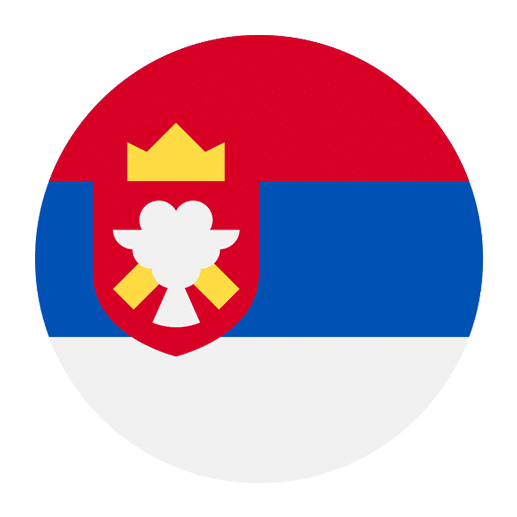Serbia, a country nestled in the heart of the Balkans, boasts a rich tapestry of history, culture, and tradition. Serbian folklore, an integral part of its cultural heritage, offers a fascinating window into the soul of the nation. This folklore has not only shaped the cultural identity of the Serbian people but has also had a significant impact on the Serbian language. In this article, we will explore the intricate relationship between Serbian folklore and the Serbian language, delving into how legends, myths, and traditional stories have influenced vocabulary, idioms, expressions, and even linguistic structure.
The Roots of Serbian Folklore
Serbian folklore is deeply rooted in the country’s history and has been passed down through generations. It encompasses a wide range of stories, including myths, legends, fairy tales, and epic poetry. These stories often feature a blend of pagan beliefs, Christian elements, and historical events, creating a unique cultural mosaic.
One of the most famous sources of Serbian folklore is the collection of epic poems known as “gusle” songs. These poems, traditionally accompanied by the gusle (a single-stringed musical instrument), recount the heroic deeds of Serbian knights and warriors. The characters in these poems, such as Prince Marko and Miloš Obilić, have become iconic figures in Serbian culture and language.
Prince Marko: A Legendary Hero
Prince Marko, or Kraljević Marko, is one of the most beloved characters in Serbian folklore. He is often depicted as a larger-than-life hero, known for his strength, bravery, and sense of justice. The stories of Prince Marko have left a lasting imprint on the Serbian language.
For instance, the phrase “Markova suza” (Marko’s tear) is used to describe a situation of deep sorrow or regret. This expression is derived from a popular story in which Prince Marko sheds a tear for his fallen comrades. Similarly, the term “Markov konj” (Marko’s horse) refers to a strong and reliable companion, drawing from the tales of Marko’s loyal steed, Šarac.
The Influence of Folklore on Vocabulary
Serbian folklore has enriched the Serbian language with a plethora of unique words and expressions. Many of these words are rooted in ancient beliefs and traditions, reflecting the deep connection between the language and cultural heritage.
Mythical Creatures and Vocabulary
Serbian folklore is replete with mythical creatures, each with its own distinct characteristics and stories. These creatures have left an indelible mark on the Serbian lexicon.
One such creature is the “zmaj” (dragon). In Serbian folklore, dragons are often depicted as powerful and fearsome beings, capable of both good and evil. The word “zmaj” is used metaphorically to describe someone who is exceptionally strong or formidable. For example, “On je pravi zmaj” (He is a real dragon) is a compliment that highlights someone’s strength and prowess.
Another mythical creature that has influenced the Serbian language is the “vila” (fairy). In folklore, vilas are ethereal beings associated with nature and beauty. The word “vila” is used to describe a woman of extraordinary grace and charm. Additionally, the term “vilinski” (fairylike) is used to describe something enchanting or magical.
Proverbs and Idioms
Serbian folklore has also given rise to a rich collection of proverbs and idioms that are still widely used in everyday language. These expressions often convey timeless wisdom and reflect the values and beliefs of the Serbian people.
One popular proverb is “Bolje vrabac u ruci nego golub na grani” (Better a sparrow in the hand than a pigeon on the branch). This saying emphasizes the importance of valuing what one has rather than longing for something unattainable. It reflects a pragmatic approach to life, a theme commonly found in Serbian folklore.
Another idiom with roots in folklore is “Ubi ga kao zmaja” (He killed him like a dragon). This expression is used to describe a decisive and overwhelming victory, drawing from the epic tales of dragon slayers in Serbian mythology. It underscores the cultural significance of heroic deeds and the triumph of good over evil.
Folklore and Linguistic Structure
Beyond vocabulary and expressions, Serbian folklore has also influenced the linguistic structure of the Serbian language. The narrative style and poetic forms found in folklore have left a lasting imprint on the way Serbians tell stories and communicate.
Epic Poetry and Narrative Style
The epic poems of Serbian folklore, often performed by guslars (traditional bards), have had a profound impact on the narrative style of the Serbian language. These poems are characterized by their rhythmic structure, vivid imagery, and repetition of key phrases.
The use of repetition, known as “epic repetition,” is a common feature in Serbian storytelling. This technique not only adds a lyrical quality to the language but also aids in memorization, making it easier for oral transmission of stories. For example, in epic poems, phrases like “I tako reče Marko” (And thus spoke Marko) are repeated to create a rhythmic and memorable narrative.
Symbolism and Metaphors
Serbian folklore is rich in symbolism and metaphors, which have seeped into the language, adding depth and nuance to communication. These symbolic elements often carry cultural and historical significance, enriching the language with layers of meaning.
For instance, the “plavi cvet” (blue flower) is a recurring symbol in Serbian folklore, representing unattainable love or an elusive dream. The phrase “tražiti plavi cvet” (to seek the blue flower) is used to describe someone’s pursuit of an impossible goal. This metaphorical expression reflects the influence of romantic and idealistic themes found in traditional stories.
Folklore in Modern Serbian Culture
While Serbian folklore has ancient roots, its influence on the language and culture remains relevant in contemporary Serbia. Traditional stories, characters, and symbols continue to inspire literature, music, and popular culture, ensuring that the legacy of folklore endures.
Folklore in Literature
Many Serbian writers and poets draw inspiration from folklore, weaving traditional themes and motifs into their works. For example, the renowned Serbian poet Desanka Maksimović often incorporated elements of folklore in her poetry, infusing it with a sense of timeless beauty and cultural heritage.
Similarly, contemporary authors like Goran Petrović and Milorad Pavić have explored folklore-inspired narratives in their novels, blending magical realism with traditional storytelling techniques. These literary works not only preserve the essence of folklore but also introduce it to new generations of readers.
Folklore in Music and Dance
Serbian music and dance are also deeply influenced by folklore. Traditional folk songs, known as “narodne pesme,” often recount ancient legends and tales of heroism. These songs are performed with traditional instruments like the gusle, tamburica, and accordion, creating a vibrant and evocative musical tradition.
Folk dances, such as the “kolo,” are another important aspect of Serbian culture. These dances are often performed at celebrations and festivals, bringing communities together and preserving cultural traditions. The movements and rhythms of these dances are closely tied to the stories and themes of folklore, creating a dynamic and immersive cultural experience.
Folklore in Modern Media
In recent years, Serbian folklore has found new life in modern media, including film, television, and digital platforms. Filmmakers and animators have adapted traditional stories and characters into visually captivating narratives, making folklore accessible to a wider audience.
For example, the animated series “Princeza i zmaj” (The Princess and the Dragon) introduces young viewers to the world of Serbian folklore through engaging and imaginative storytelling. Similarly, films like “Čudotvorac” (The Miracle Worker) draw on folklore-inspired themes to create compelling and thought-provoking narratives.
Preserving and Celebrating Folklore
As we explore the influence of Serbian folklore on language, it is essential to recognize the importance of preserving and celebrating this cultural heritage. Folklore is not only a source of linguistic richness but also a reflection of the collective identity and values of the Serbian people.
Folklore Festivals and Events
Throughout Serbia, various festivals and events are dedicated to celebrating folklore. These gatherings provide a platform for communities to come together, share stories, and showcase traditional music, dance, and crafts.
One of the most prominent folklore festivals is the “Guča Trumpet Festival,” held annually in the town of Guča. This event attracts thousands of visitors who come to enjoy traditional trumpet music, dance performances, and cultural exhibitions. It is a vibrant celebration of Serbian heritage and a testament to the enduring appeal of folklore.
Folklore in Education
Incorporating folklore into education is another way to preserve and promote this cultural treasure. Schools and educational institutions can play a vital role in introducing students to the rich tapestry of Serbian folklore, fostering a deeper appreciation for their cultural roots.
Educational programs that include storytelling sessions, folklore-themed projects, and visits to cultural heritage sites can help students connect with their history and traditions. By integrating folklore into the curriculum, educators can ensure that future generations continue to value and celebrate this important aspect of their cultural identity.
Conclusion
Serbian folklore is a treasure trove of stories, symbols, and characters that have profoundly influenced the Serbian language and culture. From mythical creatures and epic heroes to proverbs and idioms, folklore has enriched the vocabulary, expressions, and narrative style of the Serbian language. It serves as a bridge between the past and the present, connecting generations through shared stories and traditions.
As we delve into the world of Serbian folklore, we gain a deeper understanding of the cultural and linguistic heritage of Serbia. By preserving and celebrating this folklore, we ensure that its timeless wisdom and beauty continue to inspire and enrich the lives of future generations. Whether through literature, music, dance, or modern media, the legacy of Serbian folklore remains a vibrant and integral part of the nation’s identity.

